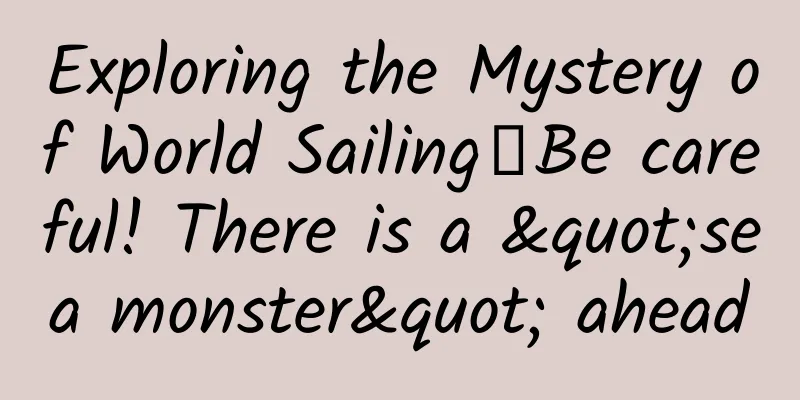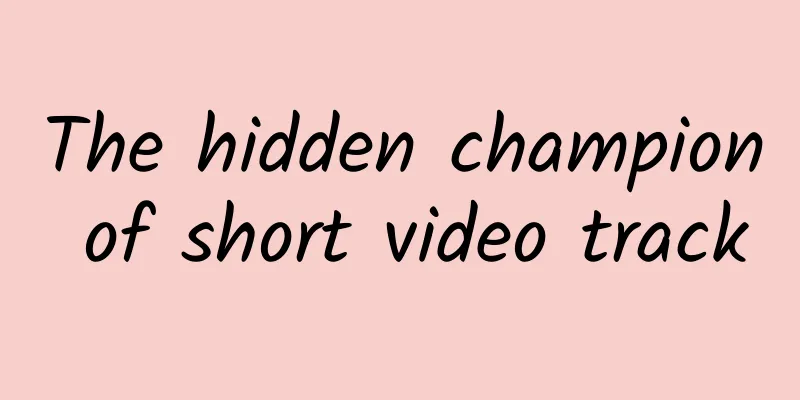Exploring the Mystery of World Sailing丨Be careful! There is a "sea monster" ahead

|
Sailed with Columbus and Magellan Travel through 500 years and see the amazing changes in world navigation! "Five Hundred Years of World Navigation: Special Exhibition of Maritime Relics from the 15th to 19th Centuries" Carrying maritime relics from more than 20 countries on five continents Officially landed China Maritime Museum Are there sea monsters in the sea? European nautical maps in the 16th century were rich in decorative elements, including sailing ships, various characters, local customs, and various strange sea monsters. The most eye-catching and curious of these decorative elements are the somewhat terrifying but grotesque and interesting sea monster images. 1597 Dutch explorer Willem Barents's Map of the Arctic Ocean Hondius's Map of the East Indies, 1606 William Brar's 17th century map of Asia In addition to maps that are sporadically decorated with images of sea monsters, there are also maps that specifically depict sea monsters in certain areas or sea routes. 1550 Illustration of the Münster Sea Monster This map depicts various sea monsters that appeared on the sea route to China The northwest corner of Olaus Magnus's 1572 chart The most extensive and influential collection of sea monsters of the 16th century Let's take a look at various sea monsters. What does a sea monster look like? What do the sea monsters in the map look like? What "magical skills" do they have? What kind of disasters will they bring to people on the voyage? 1. Strange Sea Monster A two-winged sea dragon with giant rabbit ears from Gastaldi's 1561 Atlas of the World. A ferocious sea monster from Gastaldi's Atlas of Africa, as in Ramusio's Navigazioni (1563). A sea-pig-dog hybrid from Gastaldi's La descriptine dela Puglia (1567). A humpbacked sea dragon in the South Atlantic, from Giovanni Francesco Camocio's Cosmographia vniversalis et exactissima ivxta postremam neotericorvm traditionem (1569). A sea monster spraying with its trunk, from Gerardus Mercator's Europae description, emendate (1572). A grotesque sea monster, based on a whale, with a bird-like face, spraying spray from its five trunks. From Gerardus Mercator's Europae description, emendate (1572). A one-eyed sea monster. See the map of Cornwall, England, in the Burghley-Saxton atlas (c. 1579). A bird-headed sea monster and a human-headed sea serpent, as seen in Antonio Millo’s 1582 chart. A half-fish, half-bird sea monster, as seen in Cornelis de Jauder's atlas Novae Guineae Forma & Situs (1539). Sea unicorn, see "Quivirae Regnum cum alijs versus Boream" in Cornelis de Jaud's atlas "Mirror of the World" (1539). Two-headed seahorse with shell saddle, from the map of Africa in Giuseppe Rosaccio's Dell'Africa, e sue provincie (1594). A flying turtle from Michaelis Tramezzini's 1558 Nordic map, Atlas of the Eastern Seas of Northern Europe. The flying tortoise from Gerardus Mercator's Ptolemaic Atlas. A siren admiring herself in a mirror, as seen in a 1550 map by Pierre Decellier. The Patron Saint of Poseidon playing the viola, from Ortelius's Map of Scandinavia in his Cosmic Survey (1571). 2. Sea Monster Attack Whales devouring ships off the coast of Norway. See Olaus Magnus's Chart of 1539. Jonah is thrown overboard to feed the sea monster, as shown on the map of the Holy Land in Ortelius's Cosmic Survey. A similar image can be found in John Speed's Canaan in the Time of Abraham and the Kingdom of Israel. In the Aegean Sea, a giant sea monster is attacking a large sailing ship, and the sailors are trying to drive it away with spears. See Nikolaos Sophianos's Totius Graeciae Descriptio A whale in southeast Iceland was mistaken for an island and people built a fire on its back, as seen in Olaus Magnus's 1572 chart. Do sea monsters really exist? The sea monsters in European maps in the 16th century were mostly a grotesque combination of common land animals such as pigs, dogs, birds, horses, rabbits, and marine creatures such as fish, dolphins, and whales, as well as mythological images such as sirens and unicorns. Their harm was mostly limited to common marine incidents such as ship damage and capsizing, and people being swallowed. Therefore, sea monsters do not exist, and their images are just a concrete representation of people's fear of unknown seas. Maps of this period are full of various sea monster images, mainly because people at that time had insufficient understanding and control of the ocean, lacked navigation experience and technology, and cartographers used imagination, decoration or showmanship. Although sea monsters do not exist, these sea monster images vividly show the unknown risks in finding routes, and also indirectly show the bravery and fearlessness of sailors in overcoming fear... |
>>: He is one of the prototypes of the movie! He has been "reshaping" gunpowder for 30 years
Recommend
Will drinking purified water for a long time lead to calcium deficiency in the body?
Whether it is out of concern about the taste and ...
The stronger the immune system, the better? Not necessarily! Be careful of this "immortal cancer"!
Not long ago, #13-year-old girl suffers from lupu...
Tongxiang SEO training: How to improve website keyword ranking!
Theoretically, it is very simple to improve the k...
APP promotion丨Analysis of the advantages and disadvantages of mainstream promotion channels
01 Classification by traffic rating The editor di...
Xu Xian of Lewo: Vertigo is the biggest problem with VR glasses at present
According to the news, iQIYI VR Summit was succes...
Do WeChat mini programs take up memory? Do the mini programs in WeChat take up memory?
Do WeChat mini programs take up memory? Do the mi...
Tingyun Liao Xiongjie: Full-stack APM--Build an all-round monitoring system from end to cloud
<p class="MsoNormal" style="margin-right:36.0pt...
50 points to teach you the difference between marketing and sales work in hotel operations!
I often encounter some friends asking: Are you in...
Xiaomi's sales volume catching up with Huawei? It's a bit difficult
[[133368]] When the sales of two mobile phone man...
Let’s talk about the regularization of Sina Kandian, Baijiahao and Yidianhao today?
I will start from the simple and then move on to ...
Byton plans to conduct an IPO, having previously obtained the qualification to build a car for 1 yuan
On October 29, Beijing time, Carsten Breitfeld, C...
Dual-mode connection, 4-level DPI adjustment, Xiaomi convenient mouse 2 makes mobile office more convenient
Mobile office has become a modern trend of workin...
MQ-25A provides aerial refueling for F-35C, and the Stingray grows rapidly, achieving a triple jump in the short term
The MQ-25 test aircraft, known as T1, conducted i...
Xu Yuan's investment course teaches you wealth appreciation, financial management knowledge, fund and stock course tutorial
Xu Yuan's investment course teaches you how t...
After S8, Note8 suffered another Waterloo. Chinese users have no reason to pay for Samsung phones anymore.
Although South Korean electronics giant Samsung h...









